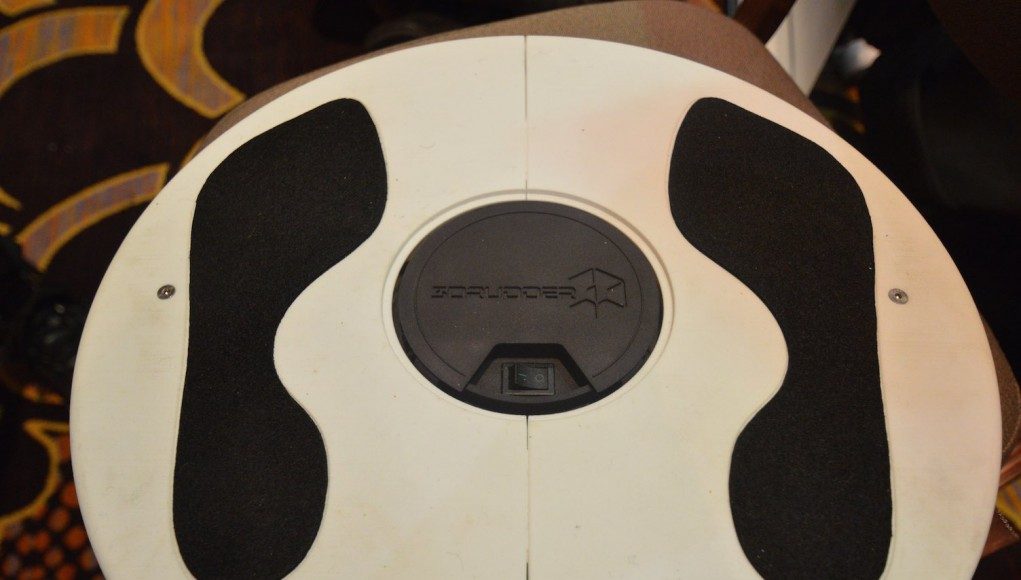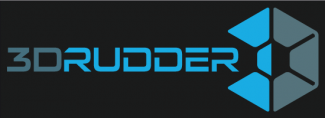 CES is officially underway and at the press preview event ‘CES Unveiled’ last night I got the chance to get my hands and feet on with the new 3d Rudder motion controller.
CES is officially underway and at the press preview event ‘CES Unveiled’ last night I got the chance to get my hands and feet on with the new 3d Rudder motion controller.
It always amazes me that a place as big as Las Vegas can host events that feel so short of space. CES Unveiled is a special press event designed to introduce up and coming technologies to the hungry journalist horde. Occupying one of the Mandalay Bay hotel’s ballrooms, it was standing room only in places. Nevertheless, we’re entirely fearless here at Road to VR and I managed to track down two intriguing devices which our readers may find interesting.
3D Rudder – The 3DoF Motion Controller for your Feet
I might well have missed 3D Rudder had their founder and CEO Stanislas Chesnais not overheard me talking and tapped me on the shoulder. The Marseilles based startup were tucked away but had managed to secure space enough to demonstrate their new motion controller – designed to be used with your feet.
See Also: Inside Look at 3DRudder, Feet-Controlled Navigation Device Headed to CES 2015
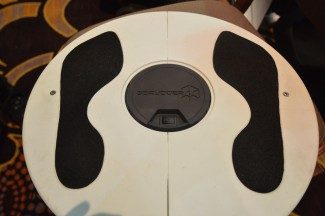 The device is essentially a disc with a soft semi-sphere underneath which allows pivoting of the device. It has two pressure sensitive areas for your feet that can detect whether your feet are resting on the device of lifted off.
The device is essentially a disc with a soft semi-sphere underneath which allows pivoting of the device. It has two pressure sensitive areas for your feet that can detect whether your feet are resting on the device of lifted off.
You spin the device for yaw, tilt the device forwards and back for pitch and tilt left to right for roll. The device can either map to keyboard presses and / or to joystick axis using software provided by 3D Rudder. Additional input can be attained by actions such as lifting one foot off the device. I got the chance to sit down with the controller and (almost literally) give it a whirl. It took a little getting used to, but after the system was calibrated I found it to be surprisingly precise.
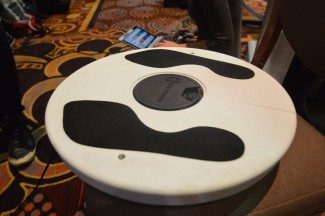 Rotating 3D Rudder rotates your view with tilting forwards and backwards moving you in and out of the scene. As mentioned, pressure sensors under your feet detect lift-off so moving your left foot to rest on the heel and the right on the ball of your feet moves the camera up and down on the Y axis. Remembering all of those combinations that meant there is definitely a learning curve involved, but I was beginning to get the hang of things towards the end of my short play-test.
Rotating 3D Rudder rotates your view with tilting forwards and backwards moving you in and out of the scene. As mentioned, pressure sensors under your feet detect lift-off so moving your left foot to rest on the heel and the right on the ball of your feet moves the camera up and down on the Y axis. Remembering all of those combinations that meant there is definitely a learning curve involved, but I was beginning to get the hang of things towards the end of my short play-test.
Chesnais told me the device sports 3DoF capabilities and is fitted with a sensor array comprising gyros and a compass/magnetometer.
One of the issues I had, one which I suspect would be easily tweak-able in software, is finding your dead-zone – a resting position for your feet. It wasn’t always easy enough for me during the demo. The demo used at the event was a CAD or 3D modelling package, but the 3D Rudder will have an SDK available for native integration for the device.
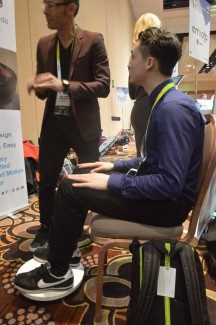
As with most controllers aimed at offering the ability to orient and control 3D space, I think this native integration will be key to 3D Rudder‘s success as a compelling controller. As ever, it’s all about the software, a view Chesnais concurred with. He was keen to emphasise the effort the company is putting into this area.
If you’re interested in supporting the 3D Rudder you can snag yourself an early bird unit via their Indiegogo campaign for $110. The campaign runs until January 18th and has so far raised around $16k.

